It’s surely been a long time since I last posted something. So, first of all, I want to apologize.
You know that I’ve been travelling a LOT these past few months, so now I can show you lots of new places and photos! ![]()
Let’s start with my summer vacation 2014 which I spent in Hokkaido this time.
I’ll share my 2 week itinerary with you and hope it’ll help you when planning your own trip.
Not everything went according to plan because two typhoons hit Japan at that time. Typhoons rarely affect Hokkaido … unless I’m there. Maybe I should graduate from being an “ame onna” and become a “typhoon onna” instead?
Why Visit Hokkaido in Summer?
People often ask me when it’s the best time to visit Japan. But is there a best time to visit Hokkaido?
Hokkaido is great in February when the yearly Snow Festival is held, in early May when the cherry blossoms bloom or from September when the autumn colors are extremely beautiful. In winter Hokkaido is one of the best places for all kinds of winter sports.
Yet summer is probably the most popular season for Japanese people to visit Hokkaido.

It’s the prefecture with the mildest climate in summer. It’s not as hot and humid and it cools down at night.
Furthermore, Hokkaido offers beautiful nature and flower fields which are best explored in summer. Most popular are Hokkaido’s lavender fields. The best time to enjoy them is July.
Try to avoid August especially during the o-bon vacation. Also, lavender blooming will be mostly over then.
Sample Itinerary: Hokkaido in Summer for 2 Weeks
I’ll share my itinerary with you, but please note that this is just one example and doesn’t include EVERYTHING you could see in Hokkaido.
It’s Japan’s largest prefecture and it’s simply impossible to see it all in just 2 weeks.
As you know I’ve been to Hokkaido before so I’ve already checked out Matsumae, Hakodate as well as Sapporo, Otaru and Shiraoi – all of these places are highly recommended.
This itinerary is for people who have their your own vehicle. I recommend a rental car.
You still can see most of the places I introduce here, but it’ll take much longer if you take public transportation.
Day 1 + 2: Biei and Furano
First of all, you probably need at least half a day just getting to your destination. In my case it took the whole first day. I flew from Kansai to Chitose Airport and took a Limited Express to Asahikawa. This is not something I would recommend, but I’ve seen pretty much everything around Chitose Airport already and thus I wanted to move on as quickly as possible.
There are other airports further in the middle of Hokkaido but flights at that time were just way beyond my budget.

Biei and Furano are both famous for their flower fields, scenic roads and beautiful landscape.
There are many ways to explore these two places depending on how much time and money you have.
If you are in a hurry, you can easily do both in a day, but you absolutely NEED a rental car then.
If you have more time, exploring by rental bicycle is the way to go. There are maps and signs specifically for cyclists and you’ll have enough time to fully enjoy the beauty of Biei and Furano.

Don’t forget to check out the “Blue Pond” (青い池, Aoi Ike) which is just outside of Biei.
There’s a bus but again you’ll be better off with your own vehicle.
The blue-ish color is really impressive and although it’s still unclear what exactly is causing it, part of it comes from natural minerals in the water such as aluminum hydroxide.
Day 3: Asahiyama Zoo
I actually didn’t plan on going to be honest. It’s a very popular destination for school trips, so don’t be surprised when you see millions of students all over the place. But as a typhoon was approaching the weather was too bad to do anything else.

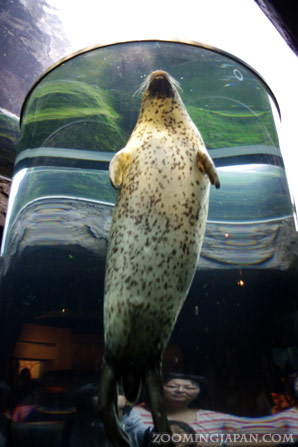
To be fair Asahiyama Zoo is one of the most popular zoos in Japan and I did quite like it.

Unlike many other zoos you can observe animals from close-up – even the dangerous ones.
The zoo can be easily reached from Asahikawa Station by public transportation.
Day 4: Mt. Asahidake
The Daisetsuzan National Park is a paradise for hikers.
As I’m not that ambitious and because I was a bit short on time, I decided to explore Mt. Asahidake which can be reached via ropeway from Asahidake Onsen.
It’s a nice day trip from Asahikawa.

You’ll quickly notice that everything is of volcanic origin. Just a bit over 1600m is a circular hiking trail for “beginners”, but some approach the summit of Mt. Asahidake – which is doable within the day if you start early enough.
You can find some alpine flowers around the ropeway station in summer.
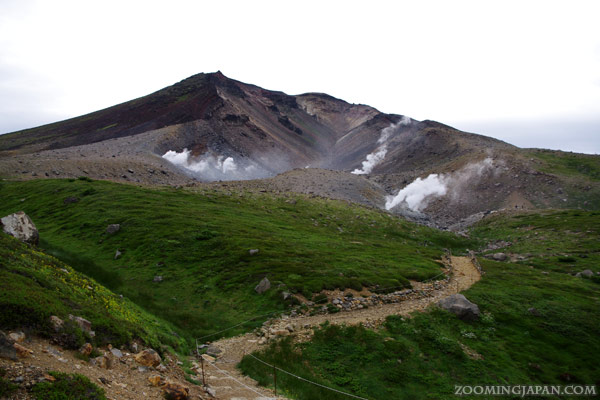
There are trillions of different trails, some are dangerous because bears could suddenly appear. If you want to approach one of the more challenging trails, you need to fill out a form and be very careful.
Mt. Asahidake is a popular tourist destination in September as it’s one of the first spots that gets autumn colors in Japan.
Day 5: Asahikawa to Wakkanai (Originally planned: Rishiri)
Actually I planned to travel from Asahikawa to Wakkanai by train on day 4 and then leave for Rishiri on day 5. Unfortunately due to heavy rains all trains stopped and I was stuck in Asahikawa. I had to cancel my hotels in Wakkanai and Rishiri as well as the bus tour I had planned.
I sat at Asahikawa Station and had to call OVER 30 hotels until I finally found one that still had a room for ONE person available.
Welcome to Japan during o-bon season! Apparently I wasn’t the only one who was stuck.
I really don’t wish anybody that kind of bad luck when they travel. So much stress!
I ended up spending almost the whole day 5 in public transportation.
Day 6: Rishiri and Rebun
Originally I wanted to spend one day on each island, but now I only had ONE day for BOTH islands.
Let met tell you that it wasn’t a problem, though. Actually quite a lot of people do both islands as a day trip from Wakkanai.
If you want to enjoy the different hiking trails, you’ll need a few days there, but other than that a day trip is more than sufficient to see the main sightseeing spots.
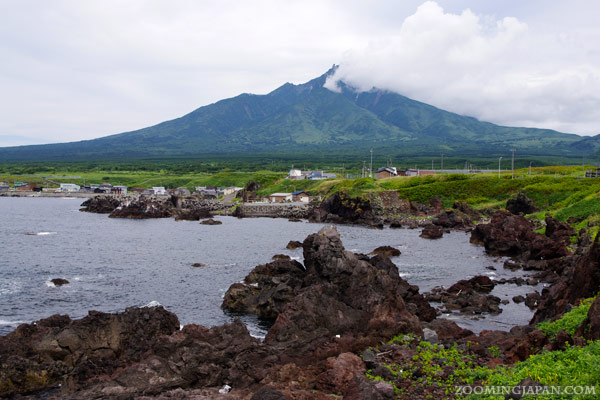
The bus tours are timed well, so they match the ferry time schedule and you can easily do the morning bus tour in Rishiri and the afternoon one in Rebun (which is what I ended up doing).
On the photo above you can see Mt. Rishiri which can be seen from Wakkanai (Cape Nosshapu) and from Rebun. Furthermore it’s printed on the packaging of the popular “Shiroi Koibito” omiyage (white chocolate souvenir) from Hokkaido.

Both islands are really far out, so I understand that not everybody has the time to pay them a visit, but they’re great if you love nature and rare flowers. In early summer (August will be too late!) you can even find some flowers that only bloom there (e.g. Rebun Usuyukiso, the Rebun version of the Edelweiss).
The climate is different from the rest of Japan. I even learned that they don’t have cockroaches unlike the rest of Japan. FTW!

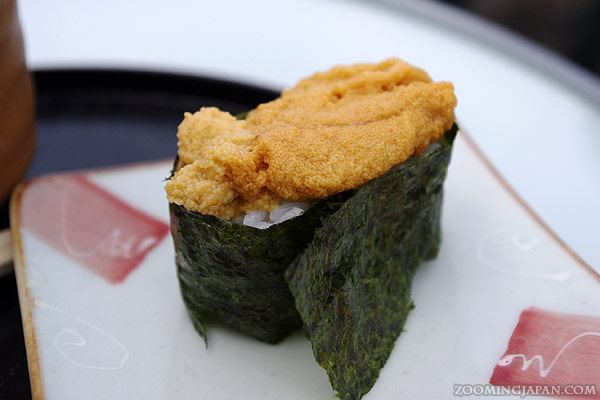
Both islands are famous for fresh seafood such as hotate / scallop (left photo) and sea urchin (right photo) – which you should to try if you go there.
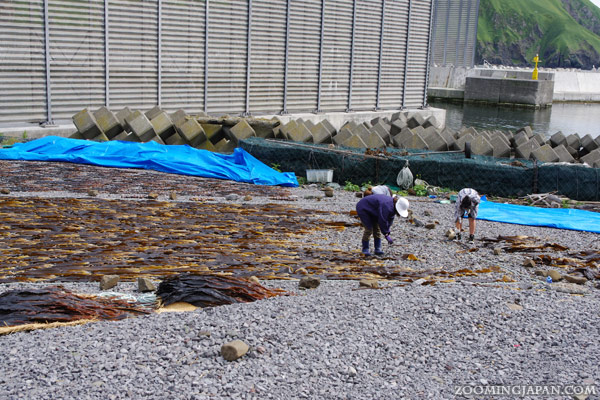
Everywhere you’ll see people putting konbu to dry in the sun. We even got dried konbu for free as a gift from our bus tour. It makes a great souvenir if you don’t want to eat it yourself.
Day 7: Wakkanai
I can’t even tell you why, but I really liked Wakkanai.
Even in summer it has a refreshing climate and you can enjoy delicious seafood.
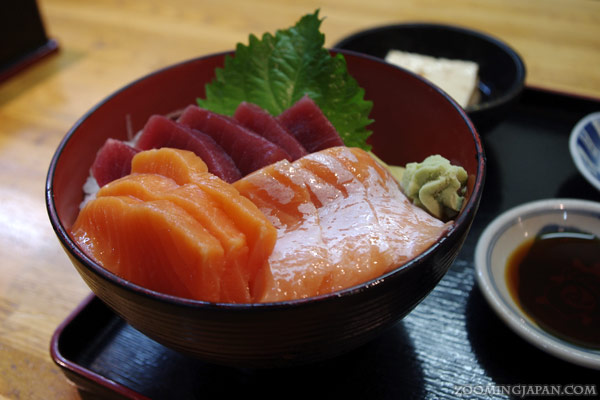
I recommend the orange building right next to Wakkanai Station. They have a huge variety of seafood, but also ramen (noodle soup) if you don’t like fish.

Central Wakkanai can be easily explored on foot. An impressive landmark and the symbol of Wakkanai is the “Breakwater Dome“. About 13m high it protects the city from strong winds, supported by Roman-style pillars.
It’s only a short walk from Wakkanai Station.

From the “Wakkanai Hoppou Kinenkan” (稚内北方記念館) which is a tower, you’ll have a breathtaking view!

Here you can see said tower in the background.
It can also be seen from Wakkanai Station and it’s lit-up at night.
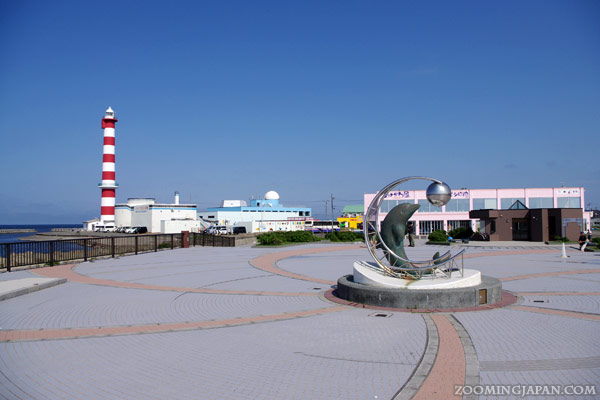
Cape Noshappu is offering great views of Mt. Rishiri on a clear day. It’s also a nice sunset spot.
There’s a small aquarium that I didn’t check out.
It’s a bit outside of the center, so you might want to take a bus if you don’t have your own vehicle.
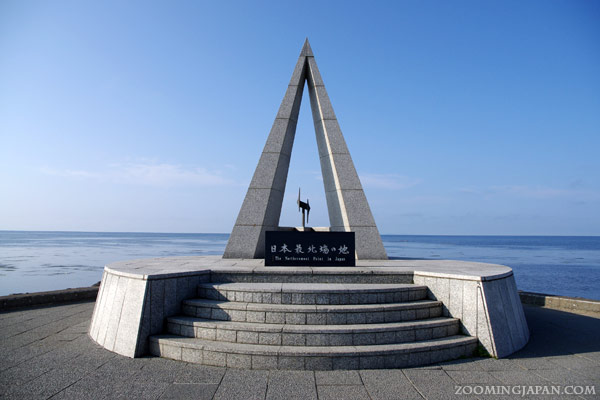
Probably the most famous spot of Wakkanai is Cape Soya which marks the northernmost point of Japan!
Definitely check it out, but as it’s over 30km outside of the city center, you will need to take a bus or have a rental car.

I guess it doesn’t surprise you that you’ll also find the northernmost railway in Wakkanai.
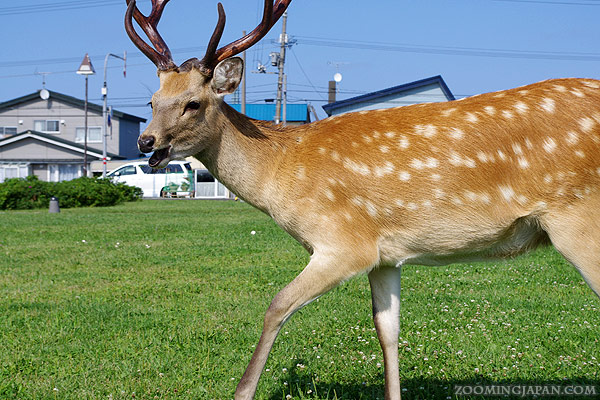
People always say Hokkaido is the land of the bears, but that’s not exactly true.
Never before have I seen so many wild deer and foxes.
I’m talking about wild deer here, nothing like the ones you’d find in Nara or on Miyajima!

These are extremely shy and it’s difficult to take photos of them because they usually run away as soon as you move.

On my long way from Wakkanai to Monbetsu I ran into so many foxes, I lost count.
While there was still daylight I was able to take photos. At night you should drive very carefully or you’ll run over quite a bunch of them!
Day 8: Monbetsu and Abashiri
As I was travelling alone, driving for a long time was tiresome. And Hokkaido is very big. On top of that the speed limit on the “state” roads is 60 km/h ….
It was impossible to leave Wakkanai in the late afternoon and to drive all the way to Shiretoko in one go. That’s why I spent the night in Monbetsu.
The next day I decided to see what Monbetsu had to offer.

There’s not much to see – at least not in summer.
The observatory in the photo above offers great views of the famous drift ice in winter. There’s a small museum where you’ll learn more about the ice, so that might be worth checking out.

There’s also a small seal center. Very friendly staff, not many people come to visit, so you can get really close to the animals which are treated well.
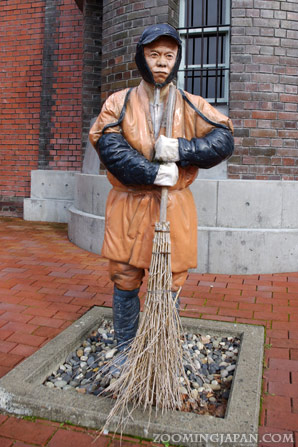
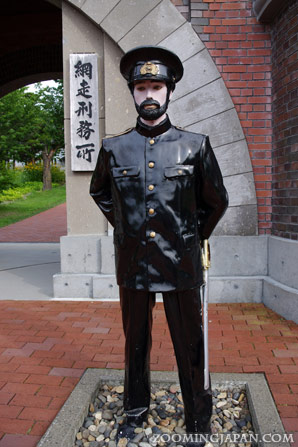
Pretty much halfway from Monbetsu to Shiretoko is Abashiri where the “Abashiri Prison Museum” is located. I’d say it’s not something you have to see unless you’re already nearby anyway.
Abashiri is best visited in winter as it’s the most famous spot for observing drift ice.
Day 9 + 10: Shiretoko
The Shiretoko National Park on the Shiretoko Peninsula is a UNESCO World Heritage Site.
You’ll find an absolutely stunning scenery as well as a lot of brown bears (be careful). Well worth a visit!
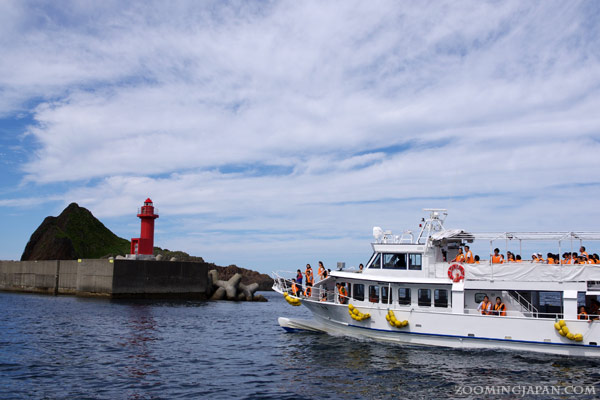
You can take a boat tour to explore the peninsula close-up. It’s also the safest way to observe brown bears.
I also got to see some – even a mother with their cubs. This would be very dangerous if you run into them, but from the boat it’s a safe distance.
I recommend taking one of the smaller boats as they can get closer to the coast, but of course they sometimes shake more – oh, and prepare to get wet.

One of the highlights are the “5 Lakes of Shiretoko“. Depending on the time of the year you need to take a lecture or a guide to enter. Bears frequently appear there leading to the closure of the park.
Even during “low bear season” you need to be very careful (although I was just running away from all the huge killer hornets, freaking little monsters)!

If you’re too afraid of bears or short on time, you can always just take the barrier-free elevated boardwalk that will lead you to the first lake (which is the most beautiful anyway).

You’ll also find several beautiful waterfalls in Shiretoko, one of the biggest are the “Oshinkoshin Falls“.

My personal highlights were the “Kamuiwakkayu Falls“. The water is warm!
You can walk up where the water is getting even warmer. It’s a great experience. I recommend wearing waterproof shoes or simply normal socks as it might be too slippery if you go barefoot.
It used to be a popular hot spring destination. Previously you could walk up more than just a few hundred meters and finally soak in a hot spring, but this location has been closed to public due to the danger of falling rocks. Too bad.
But just walking up in the warm water is awesome enough if you ask me.
Day 11: Lake Mashu, Kawayu Onsen and Lake Kussharo
Not too far away from the Shiretoko Peninsula is the “Akan National Park” featuring some stunning lakes worth checking out. For this region, you’re far better off with your own vehicle, though.
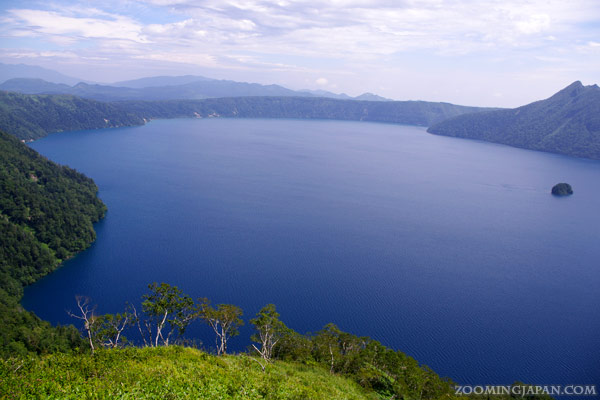
Lake Mashu is certainly one of the most beautiful lakes in Japan. It’s the lake with the clearest water and thus people are not allowed to get near it. You can only observe it from far above.

Apparently most of the time it’s foggy and you won’t be able to see the lake. You gotta be very lucky.
It was a bit cloudy and foggy indeed when I arrived, but I waited for about 2h and it cleared up.
I was so happy because, damn, this lake is so gorgeous!
Later, however, I was told that “your marriage will be late” if you were able to catch the lake on a clear day. Oh well … ^^;

Nearby “Kawayu Onsen” is a popular onsen resort where you can relax.
Even if you don’t stay overnight, you can just soak your feet and legs in the “Ashi-yu”.
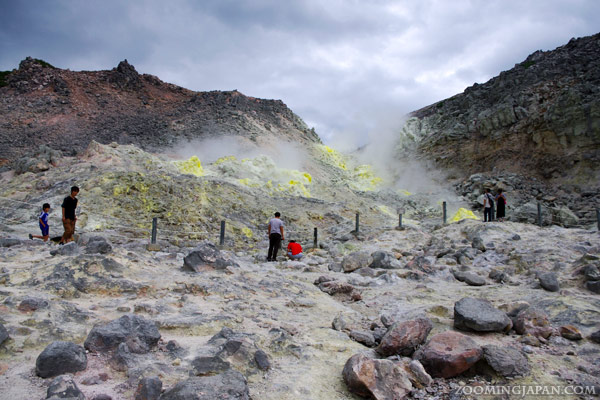
Not too far away from Kawayu Onsen stands Mt. Io (硫黄山, “Sulfur Mountain”), an active volcano. The yellow everywhere was impressive, but be aware, it stinks like hell.
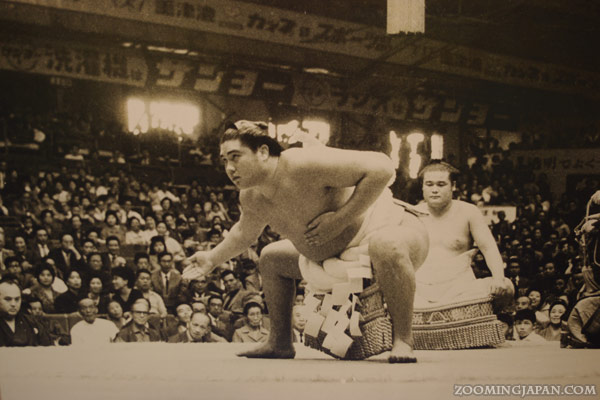
If you’re interested in Sumo, you can visit the “Kawayu Sumo Museum“.
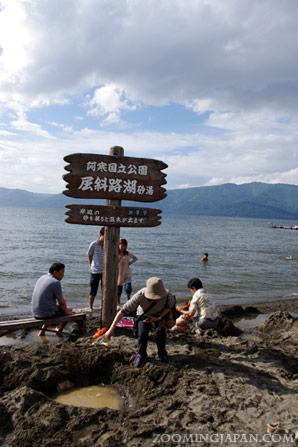
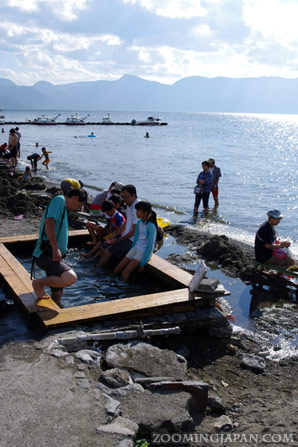
Especially when you’re travelling with children, then Lake Kussharo might be a lovely destination.
The photos above were taken at “Sunayu Beach” where you can find hot spring water just below the sand. Visitors can dig a hole in the sand and enjoy the warm water.
There’s also an Ainu museum nearby.
If you have your own car, you can easily visit all three spots in a day. I moved on to Lake Akan and it wasn’t even dark yet when I arrived there.
Day 12: Lake Akan

Lake Akan is a beautiful crater lake, surrounded by hotels with hot springs.
It’s a great place to relax and enjoy nature.
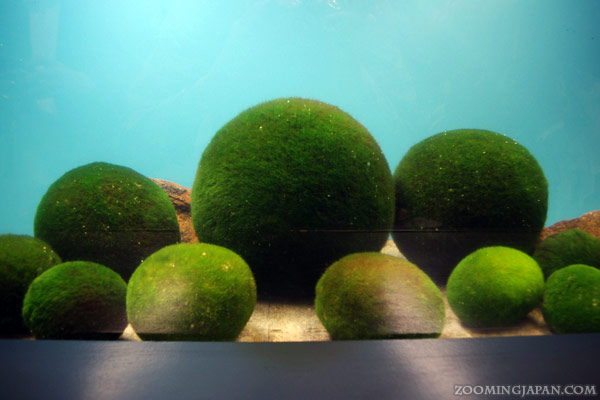
Lake Akan is famous for “marimo” – which is a rare type of seaweed that naturally shapes into a ball.
Marimo is quite popular, especially among kids. You’ll find marimo mascots and souvenirs everywhere.

There’s also an impressive shopping street with Ainu products and even a small Ainu theater where you can enjoy traditional Ainu songs and dance performances.
Day 13: Lake Onneto + Nemuro

I spent two nights around Lake Akan. I quickly visited nearby Lake Onneto which has a very interesting and unique color before I had a long drive ahead of me – all the way to the eastern tip of Hokkaido: Nemuro.
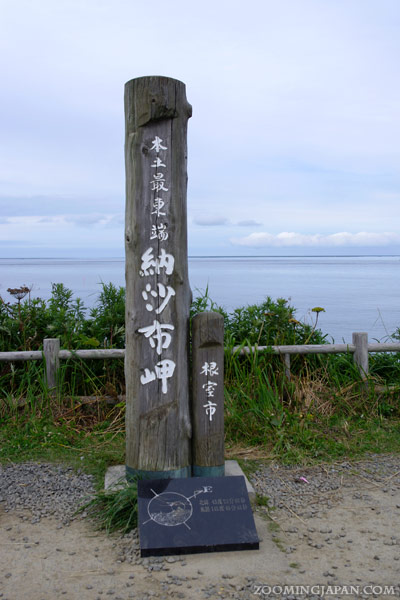
Yes, you got that right. Not only can you find the northernmost point of Japan in Hokkaido (Wakkanai), but also the easternmost (Nemuro)! How awesome is that?
The only drawback is that it’s really far out and you will need your own vehicle to get there.

Also very interesting is that you can see the “Northern Islands” from there which are still under Russian control. I’m sure you’ve heard about it.
There’s a small museum and an observatory with telescopes.


If you have a rental car and a bit of time, I also recommend checking out the easternmost station of Japan. It’s a really small, almost deserted station, but it’s still kind of cool.
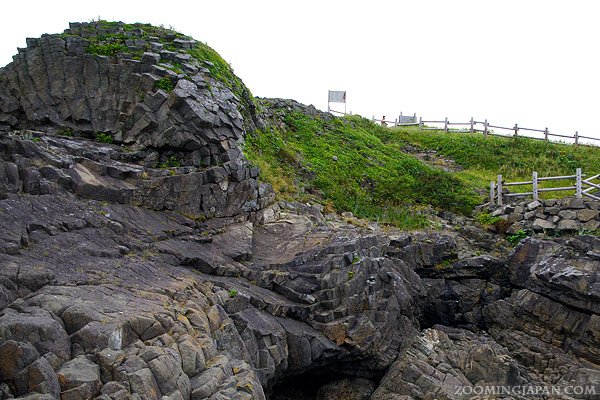
Not too far away is the so-called “Wheel Stone” (Kuruma Ishi, 車石) which is shaped like that due to strong waves clashing against it.
Day 14: Kushiro
If you’re running out of time, you could just cut the rest of the itinerary and fly home from Kushiro Airport – if that’s possible for you.
To be honest, there’s not that much to see in Kushrio, at least not in summer.
In winter, you can observe “Tancho” (the red-crowned Japanese crane).

I spent half a day at the “Kushiro Shitsugen“, the largest wetland and marsh habitat in Japan.
Here you can find the cranes, but it’s unlikely to see (m)any in summer.
Day 15 + 16: Lake Toya
As I was flying back home from Chitose Airport, I thought I could as well spent the rest of the time down at Lake Toya.
I wouldn’t recommend such a crazy schedule to anyone unlike you have the Japan Railpass or really want to squeeze in Lake Toya. It’s just very expensive and you better add it to an itinerary where you visit Sapporo and Hakodate.

That being said, I’m glad I didn’t skip Lake Toya. It was certainly one of my highlights.
I mean, just look at the photos. Isn’t that beautiful? No wonder the G8 summit was held there in 2008.

The crater lake is quite huge and you can take boat tours and even get off at the small group of islands you see in the background.
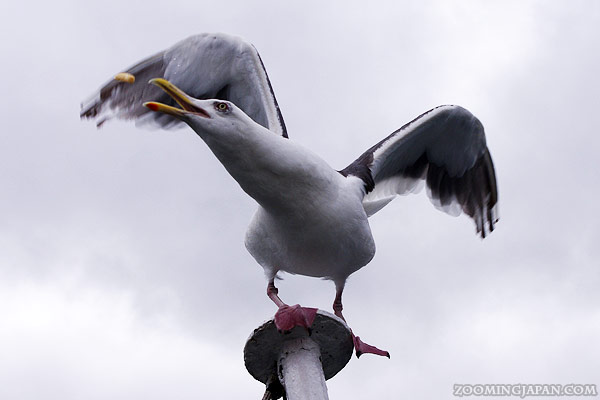
Just don’t be surprised when suddenly millions of sea gulls show up. They want to be fed and they’re pretty good at catching all sorts of snacks. (O__O”)
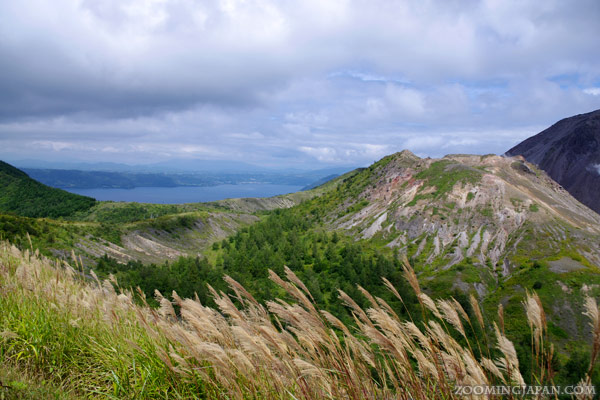
The landscape around Lake Toya is so beautiful but that beauty comes at a high cost.
Every 20-ish years the nearby volcano, Mt. Usu, erupts. The last eruption was in 2000.

You can see the landscape the volcanic eruptions have created from far above using the Usuzan Ropeway and then doing some minor hiking.
On the left there’s Lake Toya and on the right Mt. Showa Shinzan. It’s one of the newest mountains in Japan which suddenly rose there between 1943 and 1945.

The Nishiyama Crater Walking Trail will take you to several smaller craters and shows how destructive previous eruptions were.

This is a former kindergarten (and their bus), heavily damaged by the most recent eruption of 2000. Luckily everybody could evacuate on time.
Lake Toya – truly a lovely place to visit, but I’m not sure about living there. A bit scary, isn’t it?
And that was my summer vacation in Hokkaido.
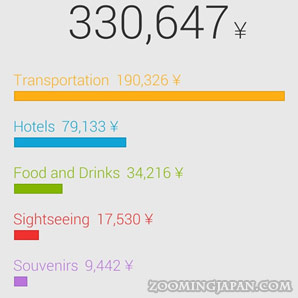
Expenses of my trip (by far the most expensive thus far).
Calculated using Expenses Manager App.
I hope you liked my itinerary. Please note that this is only possible if you have a rental car, otherwise things will take much longer.
If you go during “high season” (late July – mid August) rental cars might be insanely pricy. Book way in advance – and this is a trip where it’s much cheaper if you’re not travelling alone! I wish I had someone I could’ve shared the car costs with! Jeez!
I’ll write about all the places in greater detail soon. If you have any urgent questions, feel free to ask away.
Also, I think it might help you to read the two threads (japan-guide / TripAdvisor) where I discussed my itinerary with “Hokkaido experts”. You might find some valuable information in there.







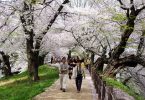
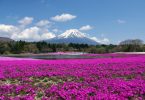
Welcome back Sunshine,
Missed you lots, but I did see you post on Ken’s site, so I knew that you hadn’t fallen off the edge of the world. AGAIN – Loved the pics; it looks a lot like Alaska, Colorado, Wyoming and Montana all combined in Hokkaido. I wonder how populous it is there as compared to the rest of Japan? Lots of long walks in Hokkaido I see, but you must have seen a lot of great scenery from the car too. I saw that you went to the northernmost part of Japan; I wonder if you could see the Japanese islands that were taken by Russia during WWII from that point (and they still haven’t returned them BTW). So glad to see that no bears of foxes had their way with you, but were there any Japanese wolfs there… LOL?
Off the subject, I recently have been watching the Korean version of Nodame Cantabile and find it very interesting to compare the two. You ought to check it out and see if you can see the differences in their way of telling that story that is so telling of their differences with the Japanese culture:
http://www.gooddrama.net/korean-drama/cantabile-tomorrow
I think you might also like to see this new Japanese drama that is very well written and acted called “Suteki na Sen TAXI”:
http://www.gooddrama.net/japanese-drama/suteki-na-sen-taxi
I’ve just about seen all the list of those shows you recommended to me a while back, so thanks for helping me out there. This “time taxi” seems to show some very interesting Japanese viewpoints on life and living that are very representative about the Japanese society. I think you might enjoy this show very much… or at least I hope you will.
ONCE AGAIN, WELCOME BACK JASMINE :sparkling: :thumbup: :luvit: :present:
Hey, glad to see you’re still around and commenting. ^___^
Actually I saw some quite awesome wolves indeed, but that was in the zoo. ;)
Oh, I loved Nodame Cantabile. I wish I had time to check out some other stuff, but I’m really too busy at the moment.
Thanks for the recommendation, though. :D
It’d very interesting to see all these destinations in the summer. I went to Hokkaido in February 2003, so a lot has changed since then (and not only because it was covered in snow). Interesting that you liked Wakkanai as I don’t really have good memories of it (except for Cape Soya), but it looks quite different from back then :)
I really want to go back to Hokkaido. It was one of my best trips ever. Rental car is definitely a must though.
I really think July might be the best time to visit Hokkaido, but I definitely wouldn’t go alone next time. Rental cars are just way too expensive there. ^^;;
Damn, I’m getting so jealous seeing all these photos. Japan seems to be a great place to visit, but unfortunately it’s out of my price range right now (curse you, my measly income :disappointed: ). Oh well, if not next year, maybe the year after that, but I’m totally gonna visit Japan someday.
Anyway, best of luck to you, looking forward to your new articles.
I know exactly how you feel.
I had to wait until I was finished with university until I FINALLY could travel to Japan for the first time.
Who would have thought that I once end up living here travelling like WOAH! ^___^;;
This is truly a great post. The pictures are amazing. I’ve been thinking of visiting Hokkaido in Feb for the snow festival but your post makes me rethink of going in the summer instead. There’s more things to see and so beautiful!
Why not go there in February and then again in summer? Of course, not necessarily in the same year! ;)
Aww, thanks! Glad you liked it.
I managed to travel around Hokkaido (at least to the places I wanted to visit) using public transport. Obviously these are the popular places otherwise there would not be any public transport. I am so thankful I went the previous summer and generally had decent weather. It was a pity your travel plans had to change because of the weather and you could not stay overnight at either Rishiri or Rebun. The wild flowers there were fantastic! I have never seen so many varieties of wild flowers in a single place before.
You are correct about Hokkaido being BIG. I need a couple more trips in different seasons to cover those places I have not seen yet.
Yes, certain places can be easily accessed by public transportation. During my first 2 times in Hokkaido, I also didn’t have a rental car and it wasn’t a problem.
I hope you get to see more soon! ^___^
Hi! I’m very happy to see you’re back and have an amazing update!
Hokkaido is my “dream Japan destination.” I never quite made it up there during my two years living in Japan and it’s always been a goal of mine to make it back there. Your photos have just persuaded me even more to go on a Hokkaido summer trip in the upcoming future (and while the yen is still cheap, too!)
And wow, your trip wasn’t cheap! I was about to ask the cost and then I scrolled to the bottom ;) But it seems like you saw every inch of Hokkaido!
Can’t wait to hear more about your Japan travels! Lake Towa and Wakkanai look like a must!
Hey Ruby!
I really hope you get to go soon. I’m sure you won’t regret it. Hokkaido is extremely beautiful, especially in summer!
Well, to be honest with you that was my MOST expensive vacation EVER! It’s kind of my own fault because I booked far too late, so flight prices were insane, the cheaper hotels were all booked out and the smallest cars as well. Plus, doing this trip alone wasn’t a smart idea. You can definitely save a lot if you travel with someone. ;)
I love the picture of the guy walking on the shallow river. It looks like a super long and super fun slip-and-slide! Do people ride them down on rubber tires and such? Heh.
I haven’t seen anybody who was doing that. Not sure if that would be a good idea, but I don’t think there were any signs that said you couldn’t. ;)
The upper part is already closed due to the danger of rocks falling down, so I’m not sure if it would be a good idea. ^^;
Really nice pictures! I went to Hokkaido this summer to see the girlfriend’s hometown and do some sightseeing. She’s packing right now to go to Germany in the morning and I kept interrupting her while looking at your pictures. “Look! look! Do you recognize here!? Have you been here!?
I thought the seafood was really good too. The fish on the sushi was so big you couldn’t see the rice underneath. Don’t think I’ll ever be able to eat uni, though, no matter how fresh!
Thank you. Glad you like the photos. :)
Well, I understand. There are certain things that are not for everybody such as goya, natto … and I guess uni is one of them as well. ^^
Hope your wife will enjoy Germany!!~
Beautiful place…
Some beautiful pictures Jasmine! I think I know where I’m going next summer. I just got to remember not to bring the rain or typhoons with me :) Good to have you back!
It would be very surprising if another (double) typhoon incident happens this summer in Hokkaido. I guess it won’t happen in the next few years yet again. I already took on that burden. ;)
But I highly recommend going there in summer. You won’t regret it! ^__^
You’re truly my inspriation!! I would love to go travel with you!! OMG!! Cant wait for the full report. Love to know the ins and outs of this trip!!
Awww, thank you so much! ^___^
But trust me, you DON’T want to go travelling with me. I’m an ame onna and I tend to ruin the trip for whoever is with me (as in: bad weather).
Hi, Jasmine!
I’m truly inspired after read this article. Your itinerary were so great.
Just like you, I became interested for Japan since elementary (cause anime n manga). And now following the time, I got more “crazy” about Japan culture and nature. Especially the nature landscape in Hokkaido.
I’m curious about Wakkanai, Rebun, and Nemuro. The landscapes look so great from your pics. So those 3 places get in my bucket list.
Every tourists who ever visited Japan they would say Japan is great and modern. Even they just travel around the Golden Route. But, this Hokkaido is something! It always amazed me.
Here’s also my trip to Kushiro and around:
http://makanangin-travel.blogspot.com/2015/02/wakuwaku-reporter-2015-hokkaido.html
http://makanangin-travel.blogspot.com/2015/02/everything-all-white-in-kushiro-hokkaido.html
http://makanangin-travel.blogspot.com/2015/03/video-hokkaido-trip-lets-report-japan.html
“It’s not just about the destination, but the journey”
It’s not only Hokkaido, though.
I love how different all the places are, even the climate differs a lot.
The difference between Okinawa and Hokkaido is insane! :)
You definitely should visit Wakkanai, Rebun and Nemuro if you get a chance to.
Hi,
Your blog is a great read!
I’m planning a return trip to Hokkaido in 2 months time. Want to focus on Eastern Hokkaido. But i’m not very sure about the driving conditions in Hokkaido. My main concern is danger and also, if i pose a danger to people and wildlife. I’m an experienced driver with 20 years of experience though.
No problem, really. Driving in Hokkaido is actually a lot of fun. Distances are great and overwhelming and the official speed limit in national roads is 60km/h. There are many foxes and deer jumping onto the street suddenly (especially at night), so you should drive carefully. But the landscape is beautiful and outside of the cities there’s not much traffic. :)
I usually don’t like driving that much, but I really enjoyed driving in Hokkaido. :D
very impressive pics and write-up!
I’m also a solo traveler.. and i’m curious.. how did you know about all these spots before going there? You’re a fan of Japan and you pre-planned it all first?
I’d love to visit some of these, but if I do fly to Hokkaido, it would be only for a few days.
It’s really easy to figure out. Just decide on a region in Japan you want to visit and then see what interests you.
Well, Hokkaido in August needs to be pre-planned and you need to book in advance. It’s high season. If you’re too slow, everything is booked out or extremely expensive. ;)
You can enjoy Hokkaido even if you just stay a few days. I once only visited Hakodate and Matsumae and was quite satisfied. :)
Hello,
I’m also planning a trip to Hokkaido this May and I’m hoping you can answer a few questions.
May I know which accommodation did you stay during the trip?
Did you change accommodation daily/often throughout the trip?
Thanks!
Hi,
I don’t think it would help you if I tell you all the accommodations I’ve used.
I changed them pretty much every single day. Due to bad weather, I had to cancel and re-arrange my accommodation several times, so I couldn’t keep track of all the hotels / ryokan I’ve used during this trip.
Also, the ones I’ve used might not be vacant for the time you plan to come.
Instead I recommend using “Rakuten Travel” to look for vacant accommodation. You also often find reviews by other people, so it’s easy to figure out if you want to stay there or not.